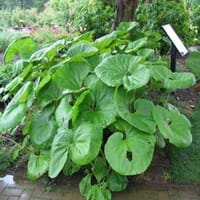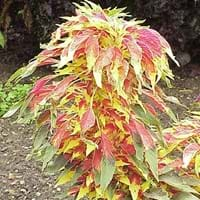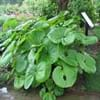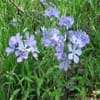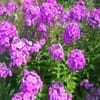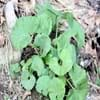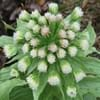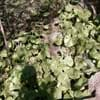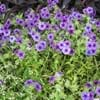What is
Life Span
Perennial
Annual
Type
Herbaceous Perennial
Ornamental Plants
Origin
China, Japan, Korea
Africa, Southern Asia
Types
Not Available
Not Available
Habitat
Dappled Shade, meadows, Shady Edge, Sunny Edge, Woodland Garden
Mediterranean region, Subtropical climates, tropical environments, Tropical regions
USDA Hardiness Zone
5-9
1-15
AHS Heat Zone
9-4
12 - 5
Sunset Zone
2a, 2b, 3a, 3b, 4, 5, 6, 7, 8, 9, 10, 14, 15, 16, 17, 18, 19, 20, 21, 22, 23, 24
H1, H2, 1a, 1b, 2a, 2b, 3a, 3b, 4, 5, 6, 7, 8, 9, 10, 11, 12, 13, 14, 15, 16, 17, 18, 19, 20, 21, 22, 23, 24
Habit
Clump-Forming
Upright/Erect
Information
Plant Size
Minimum Height
60.00 cm
99+
90.00 cm
99+
Minimum Width
120.00 cm
99+
45.70 cm
99+
Plant Color
Flower Color
Light Yellow, Ivory
Green
Flower Color Modifier
Bicolor
Bicolor
Fruit Color
Not Available
Tan, Black
Leaf Color in Spring
Green
Yellow, Red, Green, Burgundy
Leaf Color in Summer
Green
Yellow, Red, Green
Leaf Color in Fall
Green
Yellow, Red, Green
Leaf Color in Winter
Not Available
Light Green
Shape
Leaf Shape
Ovate
Oval
Thorns
No
No
Season
Plant Season
Spring, Summer, Fall
Summer, Fall
Growing Conditions
Sunlight
Partial shade, Full Shade
Full Sun, Partial Sun
Growth Rate
Fast
Fast
Type of Soil
Clay, Loam, Sand
Loam, Sand
The pH of Soil
Acidic, Neutral, Alkaline
Acidic, Neutral, Alkaline
Soil Drainage
Poorly Drained
Well drained
Bloom Time
Early Spring, Late Winter
Summer, Late Summer, Early Fall, Fall
Repeat Bloomer
No
No
Tolerances
Wet Site
Drought
Care
Where to Plant?
Container, Ground, Pot
Container, Ground
How to Plant?
Divison, Seedlings
Seedlings
Plant Maintenance
Medium
Medium
Watering Plants
Watering Requirements
Water once every two or three weeks
Average Water Needs, Requires regular watering
In Summer
Lots of watering
Lots of watering
In Spring
Moderate
Moderate
In Winter
Average Water
Average Water
Soil
Soil pH
Acidic, Neutral, Alkaline
Not Available
Soil Type
Clay, Loam, Sand
Clay, Loam, Sand
Soil Drainage Capacity
Poorly Drained
Clay, Loamy, Sand
Sun Exposure
Partial shade, Full Shade
Full Sun
Pruning
Remove the old foliage
No need to prune, No pruning needed, Remove damaged leaves, Remove dead branches, Remove dead leaves
Fertilizers
Use a fertilizer ratio of 16-4-8
All-Purpose Liquid Fertilizer, organic fertlizers
Pests and Diseases
No serious insect or disease problems
Prodenia, Red blotch
Plant Tolerance
Drought
Drought
Facts
Flowers
Showy
Insignificant
Flower Petal Number
Not Available
Single
Fruits
Showy Fruit
No
No
Edible Fruit
No
No
Fragrance
Fragrant Flower
Yes
No
Fragrant Fruit
No
No
Fragrant Leaf
No
No
Fragrant Bark/Stem
No
No
Showy Foliage
Yes
Yes
Showy Bark
No
No
Foliage Texture
Bold
Bold
Foliage Sheen
Glossy
Matte
Evergreen
No
No
Invasive
Sometimes
No
Self-Sowing
No
Yes
Attracts
Not Available
Not Available
Allergy
no allergic reactions
Not Available
Benefits
Uses
Aesthetic Uses
Bog Garden, Showy Purposes
Borders
Beauty Benefits
Not Available
Not Available
Edible Uses
Yes
Yes
Environmental Uses
Air purification
Air purification
Plant Benefits
Medicinal Uses
Antiasthamatic, Antispasmodic, Expectorant, Poultice
Diarrhea, Stomach Ulcers
Part of Plant Used
Flowers, Stem
Leaves, Seeds
Other Uses
Can be boiled and seasoned, pickled, Used as umbrellas by Japanese children, Used as walking sticks, Used like rhubarb
Not Available
Used As Indoor Plant
No
No
Used As Outdoor Plant
Yes
Yes
Garden Design
Bog Garden, Container, Feature Plant, Water Gardens
Tropical
Scientific Name
Botanical Name
PETASITES japonicus
AMARANTHUS tricolor 'Perfecta'
Common Name
Giant Butterbur, Japanese Butterbur
Joseph's Coat
In Hindi
Giant Butterbur
tandalja bhaji
In German
Riesen Pestwurz
Tampala
In French
géant Butterbur
Tampala
In Spanish
gigante petasita
Tampala
In Greek
Giant Butterbur
Tampala
In Portuguese
Carrapicho gigante
Tampala
In Polish
Giant Lepiężnik
Tampala
In Latin
Giant Butterbur
Tampala
Classification
Kingdom
Plantae
Plantae
Phylum
Magnoliophyta
Tracheophyta
Class
Magnoliopsida
Magnoliopsida
Order
Asterales
Caryophyllales
Family
Asteraceae
Amaranthaceae
Genus
Petasites
Amaranthus L
Clade
Angiosperms, Asterids, Eudicots
Angiosperms, Core eudicots, Eudicots
Tribe
Senecioneae
Not Available
Subfamily
Asteroideae
Amaranthoideae
Number of Species
Not Available
Not Available
|
||
|
||
|
